PRESERVING A MILITARY LEGACY FOR FUTURE GENERATIONS
The following Reflections represents CAPT David Francis’s legacy of his military service from 1961 to 1994. If you are a Veteran, consider preserving a record of your own military service, including your memories and photographs, on Togetherweserved.com (TWS), the leading archive of living military history. The following Service Reflections is an easy-to-complete self-interview, located on your TWS Military Service Page, which enables you to remember key people and events from your military service and the impact they made on your life. Start recording your own Military Memories HERE.
Please describe who or what influenced your decision to join the Navy.
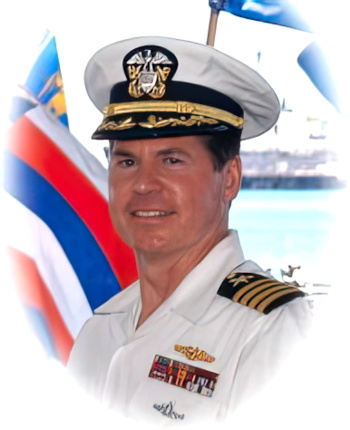
Patriotism. Serve to win the Cold War.
Submarine Service
Elected in 1960, President John F. Kennedy inspired many of my generation to public service, including me. The Peace Corps, launched by the Kennedy Administration, allowed Americans to serve humanity overseas. Kennedy also challenged us to fight against the “communist threat.” John Kennedy was one of my first boyhood heroes.
To me, John Kennedy embodied commitment and courage. Commitment to public service and courage to make the world a better place. President Kennedy’s inaugural address on January 20, 1961, spoke to me. I was inspired and determined to help “bear any burden and meet any hardship” to assure our liberty and survival.
Kennedy turned forty-four on May 29, 1961, the day I enlisted in the US Navy. Seventeen years old and still in high school, I was required to obtain my parents’ written permission to enlist. Perhaps enlisting in the US Navy would allow me to go to sea aboard a submarine. I wanted to help win the Cold War.
Whether you were in the service for several years or as a career, please describe the direction or path you took. What was your reason for leaving?

“Honor to the Soldier and Sailor everywhere, who bravely bears his country’s cause. Honor also to the citizen who cares for his brother in the field and serves, as he best can, the same cause honor to him, only less than to him, who braves, for the common good, the storms of heaven and the storms of battle.”
Abraham Lincoln, letter to George Opdyke and others, December 2, 1863
“Thank you for your service.” I hear that greeting more often than I used to. Whenever someone thanks me for my service, I often happily respond with, “You’re welcome. The Navy has been berry, berry good to me,” mimicking, of course, the voice of Chico Escuela, a character on Saturday Night Live portrayed by Garrett Morris.
If you served in the military, married into it, gave birth to a service member, or in any manner supported one, you earned the right to question, complain, and gripe, and you also had the right to be proud. Thank you to those in and out of uniform who bore the burden and won the peace; those who returned to homecomings and those who did not; and their families, loved ones, spouses, and friends who watched, waited, endured, and supported. Thank you for your service and sacrifice. I dedicate Bluejacket to you.
Those in my generation were called “war babies,” born during the Second World War (WWII). We “war babies” came of age in the 1950s and ’60s during the height of the Cold War.
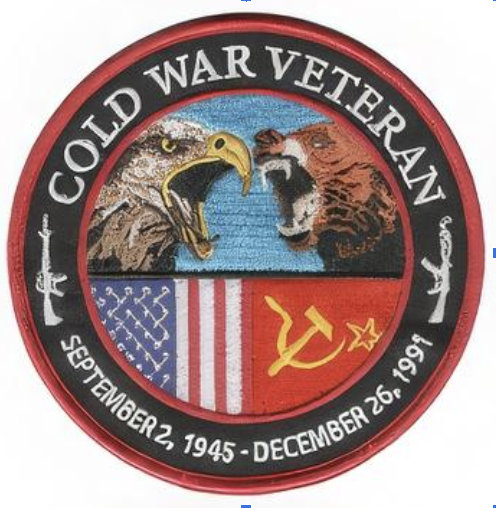
Remember the Cold War? For many years, for most of my lifetime of naval service, the Western democracies faced off against the Soviet Union and the communist bloc countries competing for world dominance. The Cold War was a long, costly, and frequently frightening military competition with the former Soviet Union. At times, our survival was in doubt.
I proudly wore Navy Blue for thirty-three years, from the building of the Berlin Wall and the Cuban Missile Crisis to the collapse of the Soviet Union. Since my birth, the United States has fought many, way too many, wars. We have continually been called to service and sacrifice in the Cold War and the War Against Terror, on battlefields in Korea, Vietnam, Iraq, Afghanistan, Kuwait, Africa (I may have missed some), and at home.
In the midst of the ravages of a global pandemic and murderous terrorism, memories of the Cold War have faded. As a US submariner, I played a small role in defending our freedom and survival. I write this book also to honor my fellow submarine sailors who spent days, weeks, months, and years from home, tolerating loneliness, isolation, and hardship to provide the nuclear shield and our hidden line of defense.
At sea for decades were United States diesel-electric, nuclear fast attacks, nuclear missile submarines, and sailors who remained hidden beneath the waves. Inside their black, submerged hulls, many carried thermonuclear missiles with more destructive firepower than all of the bombs dropped during World War Two, including the two atomic bombs, as we were often told. It was more than just a global chess match. There were countless Cold War casualties: victims, deaths, and immense physical and emotional damage.
I am grateful to the millions of Americans, both military members and civilians, who fought and won the Cold War. Second only to our still-unfinished battle for equal rights, justice, and freedom, it is America’s most prolonged struggle, lasting well over forty years. Those decades of stress were a crucible, a severe test and trial, and a defining experience for me and a great many others. That’s why I wrote Bluejacket.

As a nuclear missile submarine officer during the Cold War, I was in the thick of it. I was part of the action. And my Navy was the primary reason we survived and ultimately won. You may also remember that, for many weeks, we found ourselves on the brink of war during the Cuban Missile Crisis in the fall of 1962. We survived, I contend, because of our sea power. We prevailed because we controlled the seas.
US President John F. Kennedy told us as much on June 6, 1963, on board the USS Kitty Hawk: “Events of October 1962 indicated, as they had throughout history, that control of the sea means security. Control of the seas can mean peace. Control of the seas can mean victory. The United States must control the seas if it is to protect your security. . .”
This, my sea story, is also a love story, an account of learning and surviving, a narrative about the grandson of Irish immigrants who, raised in scarcity and disadvantage, achieved the “American dream” of financial security and social mobility. I chose the term “scarcity” instead of “poverty,” but we were poor. But among my good fortunes along the way, I met my love early in my life, and it has lasted the test of time and trial. I frequently call it my rags-to-riches story. My wife Linda is still waiting for the riches.
A lot can happen to a sailor during thirty-three years of naval service. And it did. Many people taught me many things. In the course of my writing, I returned to those events when love, learning, resilience, human compassion, gratitude, and grit helped me get through some tough times and build a meaningful life and career.
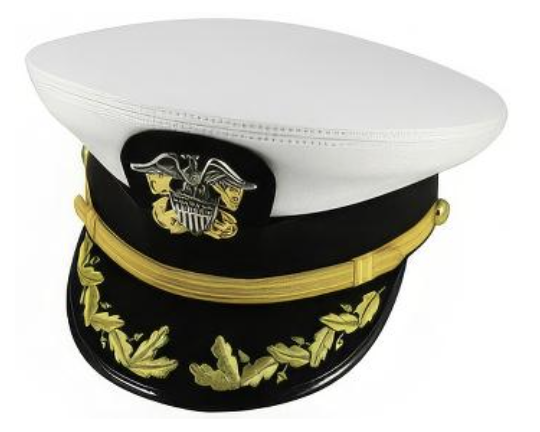
I hope that my account of overcoming disappointment, hardship, and adversity, as well as my attitude of gratitude for the love, encouragement, and support from many people, will be helpful to others navigating their unique course in life.
It was my privilege to serve and advance from a US Navy Seaman Recruit to a US Navy Captain in a mere thirty years. I owe my education and social advancement to the United States Navy and all Americans. The Department of the Navy and my fellow taxpayers financed both my undergraduate and graduate education and opened a path for a poor kid from Michigan to serve as a nuclear submarine officer and then retire as a senior naval officer.
In Bluejacket, I describe my journey: the ups and the downs (an old submarine joke), the struggles, the achievements, the loneliness, the love, and the sweet homecomings.
Prepare to dive.
If you participated in any military operations, including combat, humanitarian and peacekeeping operations, please describe those which made a lasting impact on you and, if life-changing, in what way?
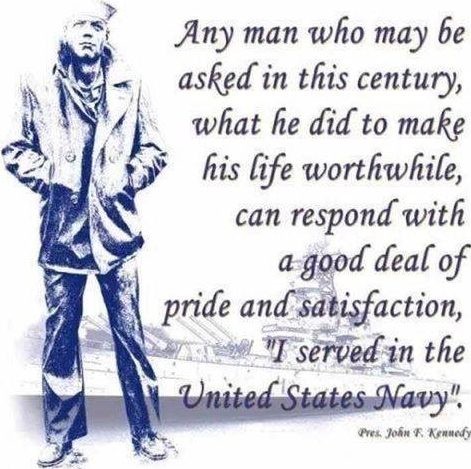
The Brink
My Navy training was low-key and uneventful until October 1962, when I learned about DEFCON, the Defense Readiness Conditions. That’s when I and millions of Americans began to live with increased fear of a nuclear war.
On October 22, 1962, President Kennedy delivered a nationwide televised address announcing the discovery of Soviet missiles on the island of Cuba, 90 miles from our shore. The president stated, “It shall be the policy of this nation to regard any nuclear missile launched from Cuba against any nation in the Western Hemisphere as an attack by the Soviet Union on the United States, requiring a full retaliatory response upon the Soviet Union.”
President Kennedy directed a quarantine of all offensive military equipment bound for Cuba. Since a blockade was considered an act of war, it was called a naval quarantine. During the president’s speech, a directive went out, placing all US military forces at DEFCON 3 (Round House: Increased Force Readiness). Anxiety levels, both civilian and military, were raised as well. We were notified that the Naval Reserve (us!) might be mobilized, depending on the needs of the active units and the course of events. At the reserve center, we were provided with little information on our naval activity. Not surprisingly, I learned more from the nightly news on TV than I did through naval channels. I just didn’t have a high enough security clearance or the “need to know.”

On October 26, the US Strategic Air Command (B52 bombers with thermonuclear weapons) went to DEFCON 2. (FAST PACE: Next step to nuclear war, Armed forces ready to deploy in less than six hours).
Like the rest of my fellow citizens, I hoped our civilian and military authorities would prevent nuclear war. Yet I was disappointed that I was not stationed on a ship on the quarantine picket line. It was a strange feeling, but I regretted not being in the action. It was life on the edge. We were engulfed in deep fear and a sense of impending doom.
Will there be another tomorrow? Is this how the world is going to end?
Later, in a college political science class, with a keen interest, I wrote a research paper, a deep dive into the Cuban Missile Crisis. This was a milestone event in my young naval career, and I wanted to know more about it. We were perilously close to a nuclear war (Estimated 150 million casualties and a nuclear winter in the Northern Hemisphere).
Despite candidate Kennedy’s claim of a missile gap during the 1960 presidential campaign, the US far outnumbered the Soviet Union in nuclear warheads and submarine-launched nuclear missiles.
By the fall of 1962, the US Navy had eight nuclear ballistic missile submarines (SSBNs) in commission, each carrying sixteen Polaris missiles. By themselves, these submarines, which could remain virtually undetected in the ocean, gave the US nuclear superiority.
Why in the world would the Soviet Union place nuclear missiles in Cuba?
Blame it on the disastrous Bay of Pigs invasion in 1961. Kennedy’s predecessor, President Dwight Eisenhower, had funded the US Central Intelligence Agency (CIA) to plan and execute an invasion of Cuba.
Kennedy would forever regret his decision to listen to the “hawks” on his Joint Chiefs of Staff and to authorize the invasion by Cuban exiles who were quickly defeated by the army of Fidel Castro, Cuba’s communist dictator. The failed invasion created continued fear in Cuba and in the Soviet Union (Cuba’s international benefactor) that the US would attempt a future invasion.
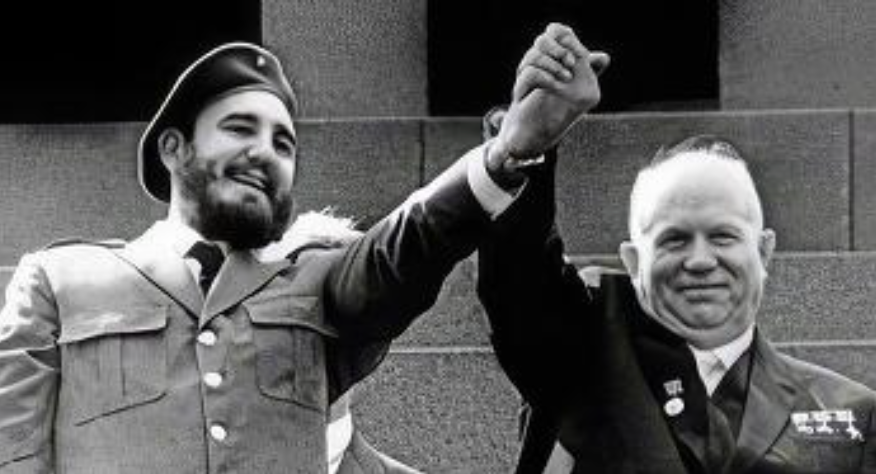
Consequently, Soviet First Secretary Nikita Khrushchev agreed to Cuba’s request to place nuclear missiles on the island to deter a future invasion. The presence of Soviet missiles based in Cuba was confirmed on October 14, 1962, by photographs taken by an American U-2 spy plane.
Much has been written about the intense and adroit diplomatic gymnastics that prevented a shooting war. Kennedy assembled a group known as the Executive Committee to manage the crisis. They tirelessly worked diplomatic channels, partnered with our NATO allies, the Organization of American States, and the United Nations, and made direct contact with Soviet leaders.
In addition to his political advisers, Kennedy was surrounded by military members of the Joint Chiefs of Staff. Many “hawks” argued for military air strikes and an invasion of the island. Kennedy resisted the urging of several military advisers to bomb and invade Cuba. The president was reluctant to kill Russian soldiers or technical advisors stationed on the island.
Did you encounter any situation during your military service when you believed there was a possibility you might not survive? If so, please describe what happened and what was the outcome.
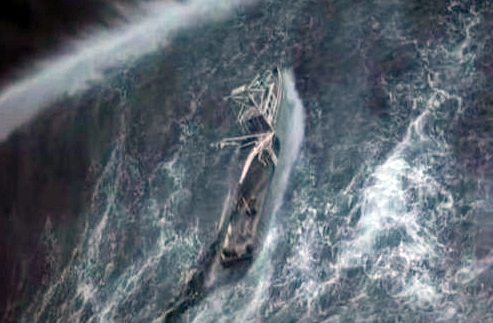
“It’s nasty weather like this here that turns heads gray before their time.”
?Jack London, The Sea Wolf
It was an uneventful, routine refit in Rota. This was my second run on the Lewis and Clark and my last SSBN patrol before I left active duty. In honor of my last underway, Captain McGarry gave me the bridge watch. Unfortunately, there was a gale raging in the North Atlantic Ocean. But Lewis and Clark could not delay our departure. We were obligated to get underway and be on station on time to cover our assigned target package.
If you’ve seen the movie The Perfect Storm, you have a vision of the sea conditions. Standing on the bridge, I drove the ship into the storm, into a rush of violent waters, an angry, agitated ocean, mountainous waves, and a menacing, unnatural green sky. It was an awesome, frightening sight. After sending the lookouts below with orders to secure the bridge hatches, I fastened the chain attached to my safety harness to the side of the sail and braced myself for a wild ride.
Riding on the savage sea, the ship slowly climbed up the front of each giant wave, careened over the crest, and then slid rapidly down the backside into the trough, where the ship shuddered violently. Each time we hit a trough, I was assaulted with gallons of cold, green ocean water. The bridge would flood up to my waist and then drain. Then, we began to ascend the next wave. It was a scary roller coaster ride, and I was seriously motion-sick.
In one of the troughs, the shaking was especially strong. I again ducked down in anticipation of the next deluge of water. When I stood up, I saw that the plexiglass windshield, which offered no protection in a violent storm, had shattered. If I had not ducked, shards of glass and pieces of steel like shrapnel would have hit me in the face, neck, and chest. I was lucky, wet, cold, and sick.

On my order, the messenger of the watch came up to the bridge with a set of wrenches. Together, we unbolted and jettisoned the remains of the windshield, which had continued to threaten me by flapping in the wind in front of my face. Word from the control room that we had reached the 100-fathom curve (water deep enough to submerge) sounded like a love song.
Following submerging the ship procedure, I went below, secured the upper and lower hatches, and took my officer of the deck position on the periscope stand, dripping wet and shivering. “Green board” was reported to me. The Captain greeted me with a broad smile and permitted me to dive the ship.
My submerged officer of the deck watch relief arrived, and so did the navigator, who proceeded to scold me for not saving the metal frame of the windshield.
“Navigator, your #%#XQ&# windshield almost killed me,” I protested.
During my last months at sea as an officer aboard a nuclear missile submarine, I was a trusted senior watch stander and division officer to four divisions comprising forty highly trained submarine sailors, one-third of the crew, and responsible for the safety and security of thermonuclear missiles and torpedoes. It was the outcome of many years of resilience, study, persistence, discipline, toil, tears, heartache, and help from many along the way. Since my beginning as a seaman recruit, I had climbed many steps on the Navy’s ladder and felt pride in my achievements coupled with sadness that I would have to leave active duty that summer.
Of all your duty stations or assignments, which one do you have fondest memories of and why? Which was your least favorite?

Bang was ordered to the Caribbean Sea in the fall of 1965 and again in the spring of 1966 to participate in NATO anti-submarine warfare exercises named Springboard and Fallboard. We would provide services for the US, British, and Canadian navies. Bang acted as an attacking Soviet diesel-electric submarine attempting to penetrate the defensive screen to make a torpedo run on the capital ship, often a US aircraft carrier.
Between us and the target was the “screen” comprised of numerous escorts, helicopters, and fixed-wing ASW aircraft (P-3 Orions), all looking for us with sonar, dipping sonar, sonobuoys, and magnetic anomaly detectors. If we snorkeled, running our diesel engines, they could detect us with a diesel exhaust sniffer.
The Canadians were especially good at coordinating ASW. While submerged, I was on watch in the conning tower when I heard a loud thud on the bridge.
Word came over the underwater telephone that we had been sunk and should surface. First, to the bridge, I found an exercise depth charge (a cement warhead-loaded hedgehog) rolling back and forth on the bridge deck. The Canadian aircraft had put one “right down our pipe.”
When the Captain arrived on the bridge, I asked if I could keep it as a souvenir. He said, “No. I’m sorry, Francis. We have to give it back to the Canadians.”
The NATO wargames were exhilarating and exhausting.
Rigged for silent running on one approach, the air conditioning and fans were shut off. In the warm Caribbean waters, the hull temperature reached 110 degrees Fahrenheit. It was hot, smelly, and stuffy. Trapped in a closed atmosphere inside a diesel-electric submarine, diesel boat sailors constantly inhale diesel fuel vapors. My body, mind, and lungs were in distress.
Surfacing and opening the hatch brought full-body relief as I felt and inhaled the cool, clean, tropical air. The blissful feeling was callously interrupted by a US destroyer sending us a flashing light message. And he was sending it rapidly.

My Morse code was never very good. I was able to catch a few words when the officer of the deck arrived and asked me what the message was.
Knowing we had just provided ASW services to the US Navy destroyer, I said, “He’s sending, “Thank you for your services. You are released.”
I returned a slow flashing light: “Roger Out.”.-. — –. . .-. — ..- – or something close. Mercifully, the destroyer’s flashing light operator stopped sending, and the vessel turned away.
Many evenings, Bang sat on the surface, running her diesel engines to recharge her spent batteries. It allowed us to recharge “our” batteries as well. It was easy to feel the romance of the sea while resting in the calm Caribbean, kissed by warm tropical breezes and embraced by a blanket of stars.
From your entire military service, describe any memories you still reflect back on to this day.

In Bluejacket – Seaman to Captain (In a mere 30 years)
I describe my journey: the ups and the downs (an old submarine joke), sea duty aboard nuclear submarines, struggles, achievements, love, lessons learned, lonely separations, and sweet homecomings. It was not just a job. It was an adventure. Prepare to dive.
Bluejacket – is now available on Amazon.com. https://www.amazon.com/dp/1936800365.
Some Excerpts:
By the Inland Sea
“I grew up on the shore of Lake Huron. The Great Lakes surrounded me. To our north were the straits of Mackinac, where Huron meets Lake Michigan. Above Michigan’s upper peninsula was the big lake they called Gitche Gumee, Lake Superior, with its countless lighthouses, lakes, bays, islands, and rivers. Great Waters as far as the eye can see.”
A Collision at Sea will Ruin your Day.
The North Atlantic Ocean. “The Soviet ship continued to play ‘chicken’ with us. (Putting us in harm’s way). Several sailors on her deck were smiling, waving at me, and taking photographs. In my mind, I imagined a weathered face, seasoned Russian Captain looking at me through his binoculars, laughing, and saying to his helmsman, ‘A kid is driving that submarine.'”

The Home Fires
“As the wife of a seagoing sailor, Linda proved to be what was commonly referred to and prized as a ‘good Navy wife.’ This is not a title of condescension but of high praise. She kept the home fires burning. She was amazing at managing the house and money, raising our children, mostly alone, and welcoming and tolerating a returning, grumpy, smelly submarine sailor.”
“This is my ‘rags to riches’ story. My wife, Linda, is still waiting for the riches.”
- David Francis.
“Any man who may be asked in this century what he did to make his life worthwhile can respond with a good deal of pride and satisfaction, “I served in the United States Navy.”
?President John F. Kennedy, Public Papers of the Presidents, August 1, 1963
“When asked what I am most proud of, I stick out my chest, hold my head high, and proudly state, ‘I served in the United States Navy!'” President John Kennedy.
Other Books by David Francis
Bringing Jon Home: The Wilderness Search for Jon Francis
A National and Midwest award-winning, inspirational memoir about the year-long search, the amazing life, tragic loss, and inspiring legacy of Jon Francis.
Grief Travelers: Learning to Live and Love Again after Loss.
A helpful guide for people who are walking through the Valley of Grief.
Proceeds from all sales support the mission of the Jon Francis Foundation.
What professional achievements are you most proud of from your military career?

The Squadron Commander and the Mess Cook
We were at sea, and I was in the scullery making a large, delicious Waldorf salad when the squadron commander, who was “riding” Seawolf, stepped into the door to speak with me. He was a full US Navy captain in charge of Submarine Squadron Ten at State Pier in New London.
He said, “Francis, did you know you have the highest test scores of all of the sailors on this submarine?”
“No, Sir, I didn’t,” I responded.
He continued, “You do. And I want you to go see the executive officer and apply for the NESEP Program.”
I promised that I would.
He pointed his finger at me and said, “Be sure that you do!” Then he departed.
Being aware of the Navy Enlisted Scientific Education Program (NESEP), I had planned to apply after I advanced to petty officer, thinking that would increase my chances of being accepted. Well, I guess I need not wait any longer. NESEP was designed to give “promising” enlisted sailors an opportunity to earn a college degree in either science or engineering. The US Navy, at the time, had a shortage of technically trained officers.
During the 1960s, Submarine Squadron Ten, an elite squadron, was composed entirely of nuclear-powered submarines. Its flagship, the submarine tender Fulton, was moored at State Pier, New London. Submarine Squadron Ten’s motto was “Find ’em, chase ’em, sink ’em.”
Of all the medals, awards, formal presentations and qualification badges you received, or other memorabilia, which one is the most meaningful to you and why?

Enlisted Submarine Dolphins
Officer Submarine Dolphins. For qualification to serve aboard US Navy Submarines
After we relieved the Blue Crew to take over Washington for our second Gold Crew patrol, I focused intensely on my final signoffs and walkthroughs with the executive officer, commanding officer, and finally, the squadron commander. It was finished! I earned my gold “dolphins.”
Qualifying in submarines as an officer was one of my life’s most difficult undertakings and one of my most rewarding accomplishments, affirming that I had demonstrated a vast knowledge of all systems, operations, and casualty control aboard a submarine.
Having the confidence and foresight, or the audacity, to anticipate this, I had purchased my gold dolphins at the Navy Exchange before taking the crew flight to Rota. Opening my stateroom locker, I took them out and pinned them in place of my silver dolphins, which I had been wearing for seven years since my time on Seawolf.
Which individual(s) from your time in the military stand out as having the most positive impact on you and why?

My manager at 3M, Al Anderson, a Naval Reserve lieutenant commander, encouraged me to join the Naval Reserve. It made sound financial sense. With my thirteen years of service, I could retire with a small pension in seven years.
So, in August, I joined the Naval Reserve. This was full circle for me since I began as a naval reservist. Shortly after I signed my Naval Reserve papers, I received a letter from the Department of the Navy: my promotion to lieutenant, United States Naval Reserve. The lieutenant is the third commissioned officer rank in the United States Navy, comparable to the rank of Captain in other branches of the Armed Services.
Once again, I learned to appreciate the important role of a mentor (wise advisor, teacher, and coach) in my life and career. Al, a superb manager and leader, was selected as commanding officer of a Naval Reserve cruiser unit. He appointed me his officer in charge of unit training. This was my first paid reserve officer assignment. Just what I needed to keep the family afloat.
List the names of old friends you served with, at which locations, and recount what you remember most about them. Indicate those you are already in touch with and those you would like to make contact with.
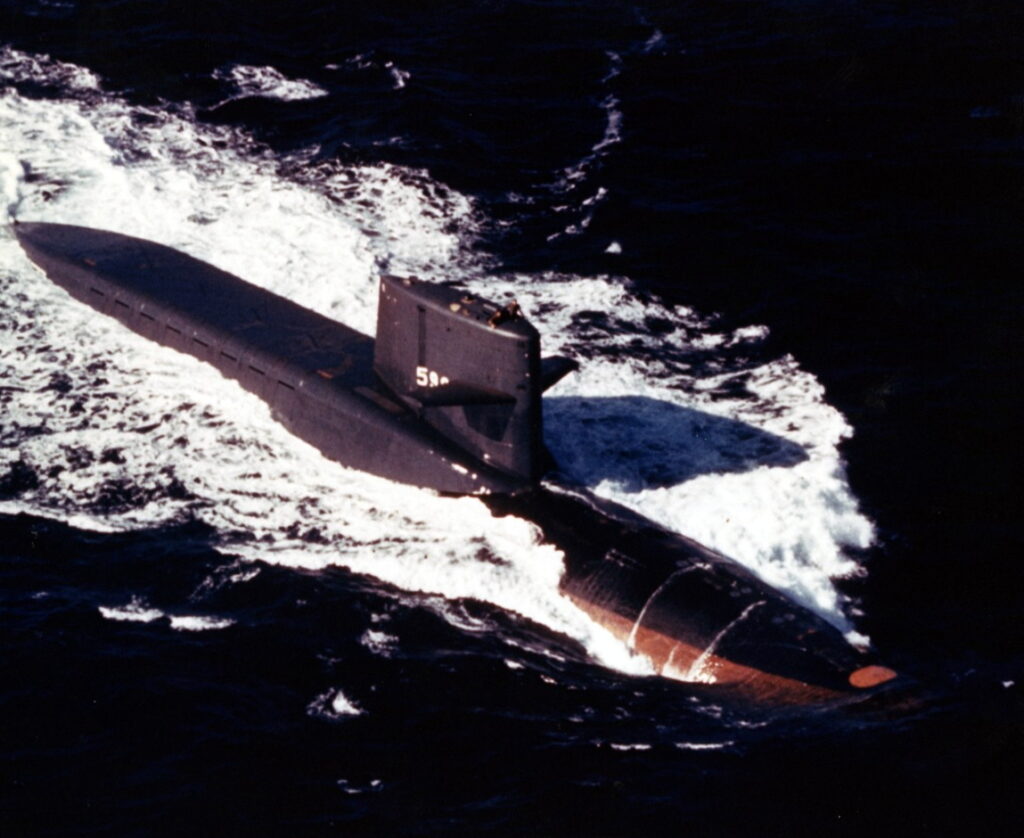
Blue and Gold
The United States Navy colors are blue and gold, so it was natural for the submarine force to use blue and gold to identify each crew in the two-crew ballistic missile submarine concept. As George Washington approached the end of her shipyard refit, more personnel came aboard and were assigned to fill the billets for each 140-man blue crew and gold crew. Back then, only males served aboard nuclear submarines (not like the coed crew of Starship Enterprise).
I was assigned as the Gold Crew assistant weapons officer. Keith was our executive officer, and Jim was our weapons officer. When our Gold Crew commanding officer arrived, Lieutenant Commander David (Dave) Fields, at thirty-five years old, was the youngest nuclear submarine commanding officer in the fleet. He was nearly the same physical size as me, very personable, and high-energy.
Can you recount a particular incident from your service which may or may not have been funny at the time but still makes you laugh?
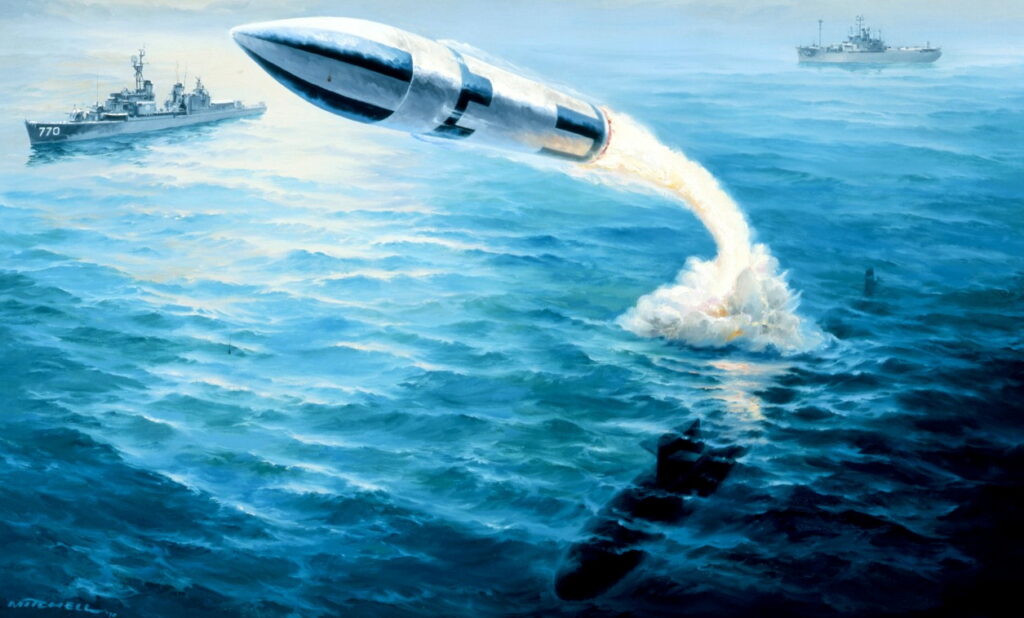
The Check List
My team and I assembled in the Torpedo Room, eager to demonstrate our skills and pass our inspection. Several observers stepped into the torpedo room, including our commanding officer and the squadron commander.
Following the required checklist, I directed the firing. The firing handle was pulled. Air hissed violently through the system. Bang! The piston drove forward. Then, swish, the sound of rushing water in the torpedo tube.
Boom! Success? No!
Firing air was loudly released, and the torpedo room was instantly filled with small white flakes as if we were in a snowstorm. Hundreds of white flakes landed on everything and everyone, including the Captain and the commodore.
Stunned, I was met by an angry look from the CO. He said, “Dave, find out what happened here.” He spun around and departed. My Senior Torpedoman was the first to assess the confusing situation.
Following his hunch, he opened a deck plate and went down to inspect. In the Torpedo Room bilge, he found an exploded case of Nabisco Vanilla Wafers.
Further investigation revealed that a seaman, ignorant of the muffler’s function, hid the entire case of cookies there, intending to hoard them. It took several days and many seamen and torpedo men to clean up the mess.
Our torpedo firing checklist contained all required steps except one: check inside the muffler for cookies.
Soon, full-color, hand-drawn depictions of the event were posted throughout the ship. They showed a torpedo room filled with white flakes and an officer (me) announcing, “The ship will now be firing cookie slugs.” Washington’s political cartoonist remained anonymous.
What profession did you follow after your military service, and what are you doing now? If you are currently serving, what is your present occupational specialty?

Naval Reserve Commanding Officer
3M Manufacturing Engineer
IBM Marketing Representative
Vice President of Sales and Marketing
Adjunct Professor at two Twin Cities Universities
Executive Director of the Jon Francis Foundation
What military associations are you a member of, if any? What specific benefits do you derive from your memberships?
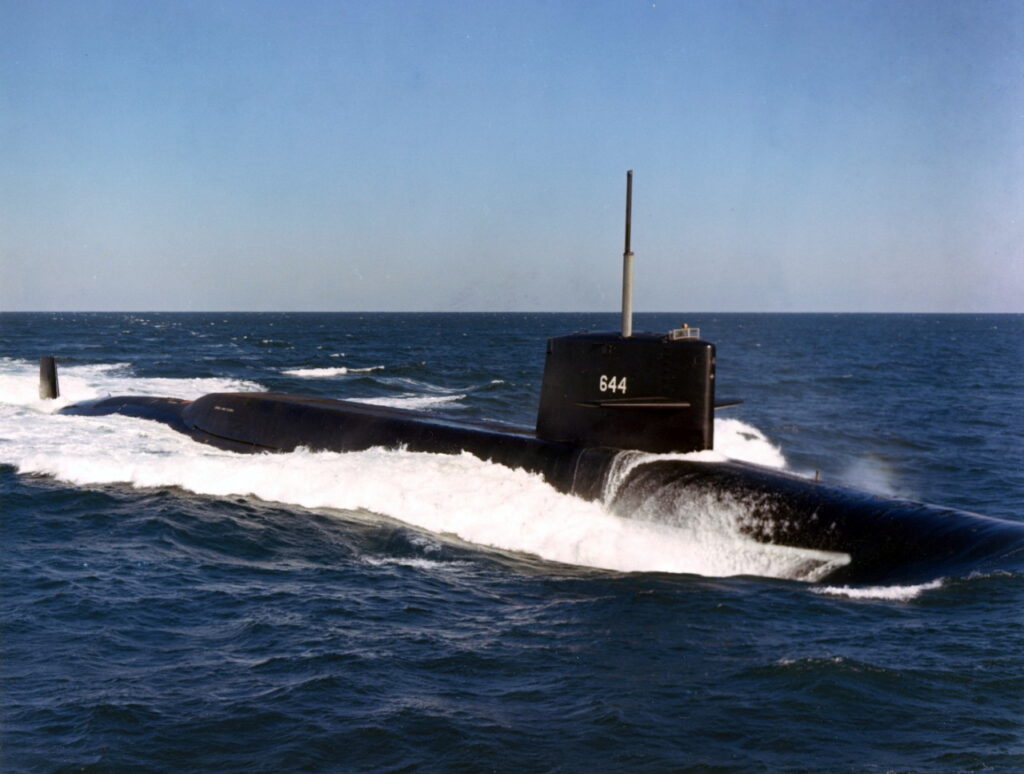
Keeping up to date on events that impact veterans.
In what ways has serving in the military influenced the way you have approached your life and your career? What do you miss most about your time in the service?

You may have noticed a few chapters that began like this with a naval insignia and a description. This is the last one. I did not get promoted to Admiral. And I never thought I would ever make Captain. But I did.
And spanning three decades, I did complain a lot. When I enlisted in the US Navy at age seventeen, and my grandmother sewed my one seaman recruit stripe on my uniforms, I could not imagine that one day, I would retire as a senior naval officer. It did not seem possible or realistic. But it happened. And I could not have done it alone. Many people taught me many things, and I have many people to thank:
Linda Francis is my patient, loving, and supportive life partner and Navy wife. She was the glue that kept the family together. She married a sailor and bore the burden of being alone for months, keeping the home fires burning, raising children essentially as a single parent, maintaining our house, and supporting my chosen seagoing career.
What did I learn?
- “Don’t reinvent the wheel.” (You may have heard this a few times.)
- There is knowledge to borrow from others.
- It’s out there in books and in people’s minds and experiences.
- Find it, ask for it, and use it.
- Problem-solving is a community activity. As a result of future learning, I wish I had taken a more collaborative/problem-solving approach in my first CO assignment in La Crosse, Wisconsin.
- Hold discovery meetings with unit personnel and leaders to uncover reasons why the unit was unable to pass two annual readiness inspections in a row.
- Assess what’s broken. What are the reasons for the failure? What’s not working?
- After the lessons learned are learned, jointly develop a get-well plan that addresses the deficiencies.
- Create a road map for success.
- Develop a classic project plan with action items, timelines, and responsible individuals.
- Share the burden and the responsibility for progress and success.
Based on your own experiences, what advice would you give to those who have recently joined the Navy?

What did I learn?
- Never stop learning.
- Lifelong learning can be good for your career and your life.
- Knowledge is power, and it can also be life-altering, useful, interesting, and stimulating.
- Never miss an opportunity to tell your loved ones that you love them.
- Check the weather forecast at your destination before you leave home.
- Naval officers (and all military leaders) lead and serve because of a sense of duty, mission, patriotism, care for those in our care, professional pride, and to get a good fitness report for retention and promotion.
- Always affirm, recognize, and reward accomplishments and achievements.
- Public praise motivates good behavior and good performance.
- The Midwestern United States grows good sailors.
In what ways has togetherweserved.com helped you remember your military service and the friends you served with.

Very helpful. Thank you for doing this.
PRESERVE YOUR OWN SERVICE MEMORIES!
Boot Camp, Units, Combat Operations
Join Togetherweserved.com to Create a Legacy of Your Service
U.S. Marine Corps, U.S. Navy, U.S. Air Force, U.S. Army, U.S. Coast Guard
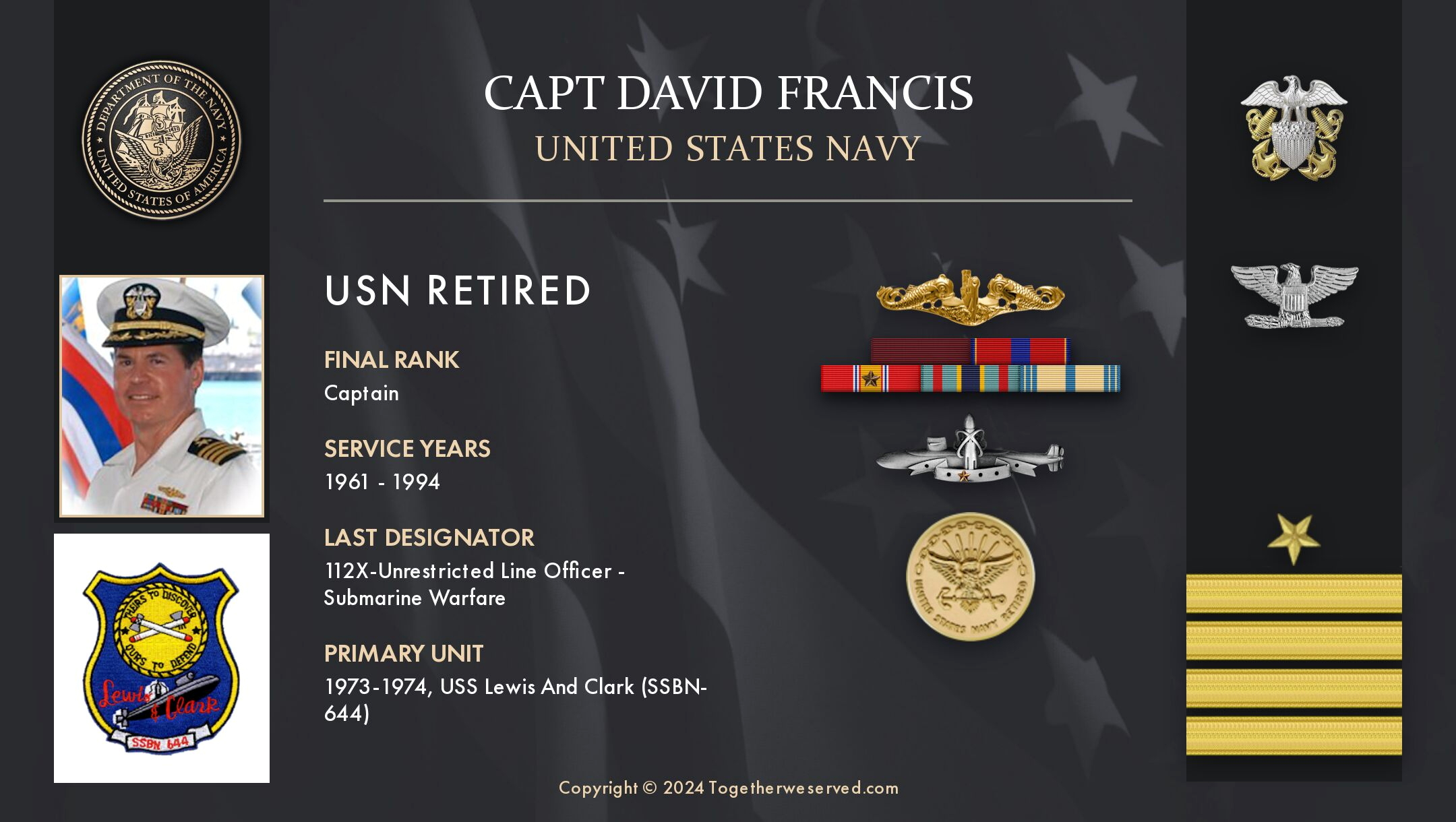
Great news for all us
Fine news for all us
Greatest news for all us